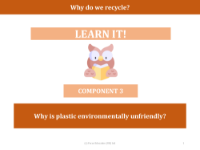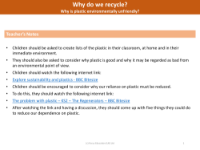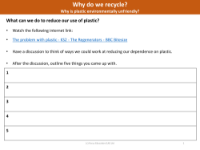Why is plastic environmentally unfriendly? - Why is plastic both good and bad? - Worksheet

Geography Resource Description
Plastic is a material that presents a paradox due to its utility and environmental impact. On one hand, plastic is highly valued for its versatility, durability, and cost-effectiveness, which has led to its widespread use in various industries and everyday products. It has become an integral part of modern life, with applications ranging from packaging and construction to healthcare and transportation. However, the very qualities that make plastic so useful also contribute to its environmental shortcomings.
The downside to plastic's durability is that it does not easily decompose, leading to significant environmental problems. Plastic waste can persist in the environment for centuries, often ending up in landfills or, worse, in natural habitats such as oceans, where it can form large floating rubbish patches carried by ocean currents. The issue of plastic pollution is exacerbated by its resistance to breaking down, resulting in harm to wildlife and ecosystems. This has sparked a global conversation on the importance of recycling and finding sustainable alternatives to reduce the environmental footprint of plastic. As such, understanding the dual nature of plastic is crucial for addressing the challenges it poses and promoting more environmentally friendly practices.



